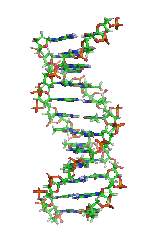KUALA LUMPUR (Oct 29): The Health Ministry has no intention of introducing a Stem Cell Act as the current guidelines are believed to be sufficient to regulate the research being carried out in this growing field.
Minister Datuk Seri Liow Tiong Lai said his ministry has taken the lead to regulate this field by producing four guidelines that provide framework for researchers, clinicians and companies involved in research, clinical trials as well as manufacturing of stem cells.
These four guidelines and standards cover haemopoietic stem cell therapy; cord blood banking and transplantation; stem cell transplantation; and stem cell research and therapy.
Liow stressed that these guidelines, which were introduced in December 2006, with a second edition in July 2009, serve as standards to which practitioners and scientists must abide to in order to ensure no harm is done to the patient.
As such, he said there was no need to table a Stem Cell Bill in Parliament to monitor research and transplants in this field.
Liow said the ministry set up a National Sub-Committee for Ethics in Stem Cell Research and Therapy (NSCERT) as an oversight body for all stem cell research in the country, and religious authorities were consulted while drafting the guidelines.
When asked, Liow said that a fatwa was issued by National Fatwa Council to allow researchers to use the excess embryos, produced through IVF, that have been stored by Muslim couples for research.
In addition, all the stem cell therapy must be tested before use on human body.
Liow also gave some statistics on stem cell transplants in the country.
In 2009, a total of 213 haemopoietic stem cell transplants were performed and registered in this country, with 87.7% performed in public or university hospitals. The Ampang Hospital is the largest centre for this type of transplant and currently, there are 11 such centres in Malaysia.
Read more from the original source:
'Adequate guidelines for stem cell industry'
